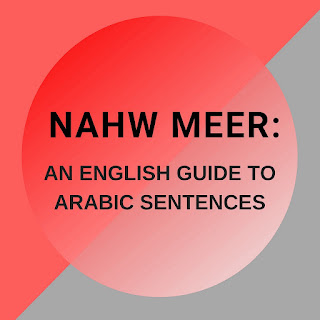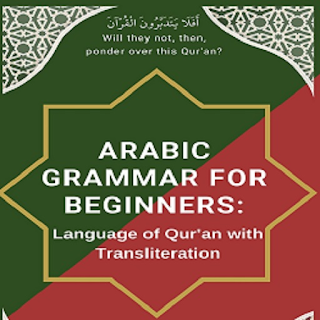Nabaa-Infitaar: 1.0a - Preface
بِسْمِ اللهِ الرَّ حْمٰن الرَّحِیْمِ
In the Name Of Allah, The Most beneficent, The Most Merciful
Preface to English Edition
نَحْمُدُهُ وَ نُصَلِّيْ عَلٰى رَسُوْلِهِ الْكَرِيْمِ.
We praise Allah and may peace and blessings be upon His noble messenger Mohammed Sallallahu alaihi wa Sallam. The messenger of Allah (PBUH) said: خَيْرُكُمْ مَّنْ تَعَلَّمَ الْقُرْآنَ وَعَلَّمَهٗ meaning “The best amongst you are those who learn the Qur’an and teach it.”
Presented here is the English translation of the classic book Qur’an Darsi Tafseer, Juzz 30, Para Amma, authored by Maulana Naseem Ahmed Ghazi Muzahiri and Mufti Rashid Mahmood Raja. Mufti Rashid desired that it is a good time now for this book to be brought to the electronic media in English and make it available internationally. Therefore, he requested me to take the task of translating, updating, and publishing.
I decided to do this work in several steps. The first was to divide the Juzz 30 into four sections. Part 1 from Surah An-Naba’ to Al-Infitar, part 2 from Surah Al-Mutaffifin to Surah Al-Ghashiyah, Part 3 from Surah al-Fajr to Surah al-Qadr and part 4 from Surah Al-Bayyinah to Surah An-Nas.
Secondly, I decided to publish the translation of grammar only to reduce the size of the book and also for those who are purely interested in the technical grammatical aspects of this Juzz for learning the language of the Qur’an.
Thirdly, I planned to publish part 1 first without the Tafseer and later include the Tafseer depending upon the interest from the feedback if I get any. Then, depending on this book's demand, I would publish the remaining volumes with and without the Tafseer portion.
I have worked with Mufti Rashid and have benefited much related to Arabic Grammar and Tafseer of the Qur’an. His knowledge and depth of Arabic grammar and background in the Holy Qur’an are impressive. May Allah reward both the Author and him immensely.
This book is the first of the four volumes that I have extracted from the book, and it covers Surah An-Naba’ through Surah Al-Infitar. I have further edited and added some material for completeness as I thought appropriate. Therefore, I humbly request the readers to provide any input they may have regarding recommendations, suggestions, comments, usefulness, and any thoughts. Email and phone numbers for WhatsApp are on the book's second page. I would be honored to hear from you.
May Allah Subhanahu wa Ta’ala accept this humble effort and provide a means for maghfirah in the hereafter.
Mohammed Sajid Khan
Seema Publications, LLC
West Bloomfield, Michigan
March 2020
***
Mufti Rashid Mahmood Preface
Translated From Urdu
The Qur'an is a miraculous and glorious undeniable book, comprehensiveness of which can only be estimated by its subjects and perception, symbolic and hidden secrets, eloquence and clarity of the message, and other endless series of features. It has been studied and interpreted by many scholars of the Quran per their level of understanding in their time period. Yet, despite these efforts, its wonders never seem to end. After seeing these features, the practical implementation of the saying of the Prophet, peace be upon him لَا تَنۡقَضِیۡ عَجَائِبُهُ comes to mind.
The science of interpretation of the Quran's knowledge is the most important and highly placed part of the subjects taught in our Islamic Schools, which is why our seminaries have been teaching the science of Quranic interpretation for centuries. In the curriculum of Darse Nizami, understanding of the entire Qur'an is taught so that the complete Holy Quran is committed to the memory of the students with translation. In this regard, the male and female students of secondary schools are given relatively detailed lessons on the Juz 30 Para Amma. The students are taught morphology, the practice of syntax rules, vocabulary solutions, construction, revelation background, the connection between Surahs and verses, and other discussions are taught in detail, and students are taught to commit them to their memory. Plenty of material is available for training in this way, but it is not available in a compiled manner in one place. It is, therefore, necessary to turn to Quranic interpretations separately. It will be an unexpected blessing if the discussion combining all of the above is found in a book.
Presented here is the Interpretation of the Quran part 30 by Maulana Nasim Ahmad Ghazi Muzahiri, which like other different styles and methodologies of other interpreters (Unitarianism, prophethood, tasawwuf and journey of the spiritual path, manners, and morals, philosophy, and logic) has its style and methodology in which:
1) The number of Rukus in the Surah, the number of words, and the number of alphabets have been presented first.
2) Then the name of the Surah is discussed as to why this Surah is given its name and the reasoning behind it.
3) Afterward, the connection between Surahs has been explained, and any possible objections have been answered excellently.
4) In addition to the revelation background, the occasion of the revelation of this Surah and sometimes the place of revelation has been pointed out. Finally, straightforward language and refined translations have been presented.
5) In the course of the description, if the verb or the Derivative noun (اِسْمُ الْمُشْتَقِّ) appears, its discussion is fully moderated.
6) After providing the meaning of the words, and the complete syntax of the mentioned verses, the sentence construction method (تَرْکِیْبُ النَّحْوِيُّ) is presented in a very easy to understand manner.
7) Since the students are taught the Juz 30 in the beginning part of their education, this new word translation is specifically presented for the convenience and ease of the students, and this is the main characteristic of this book as compared to the books published by other institutions and holds an evident uniqueness and importance. For this reason, I think students would like this book and would want to benefit from it since they need to know the meaning of each word and understand its meaning.
The book has been in print in Pakistan for a long time, showing demand. Therefore, a need was felt that this book is printed and presented in the English language in eBook and paperback formats in an attractive manner. With Allah’s help, the initial need for the Urdu version was well-addressed by the Maktabal Hadi, Shah Faisal Town, Karachi, and the need for the word-to-word translation has been accomplished, which is precisely what was needed. Therefore, we have tried to follow suit and present it in the English language and ask Allah SWT to make it of good use by students of English background.
It is hoped that this translation and interpretation will benefit the students and teachers alike, Insha-Allah. And it will not be necessary for them to refer to any other book concerning the essential matters. Looking at the book's contents, it is likely that the author has also gone to extra lengths in some places for this very reason. This is why some subjects have a lengthy discussion and, in some cases, may have been taken above the level of the beginner student. The book does not miss any detail in the subject matter. To benefit from this book, the students need to concentrate and memorize the meanings of the words and pay attention to the sentence construction and different possible meanings. If the students go through this Juz in this manner, inshaa-Allah will become familiar with the style and presentation of the Qur’an, and that is the purpose of this effort.
Mufti Rashid Mahmood Raja
Administrator, Maktaba Alhadi
Shah Faisal Town, Karachi
***





Comments